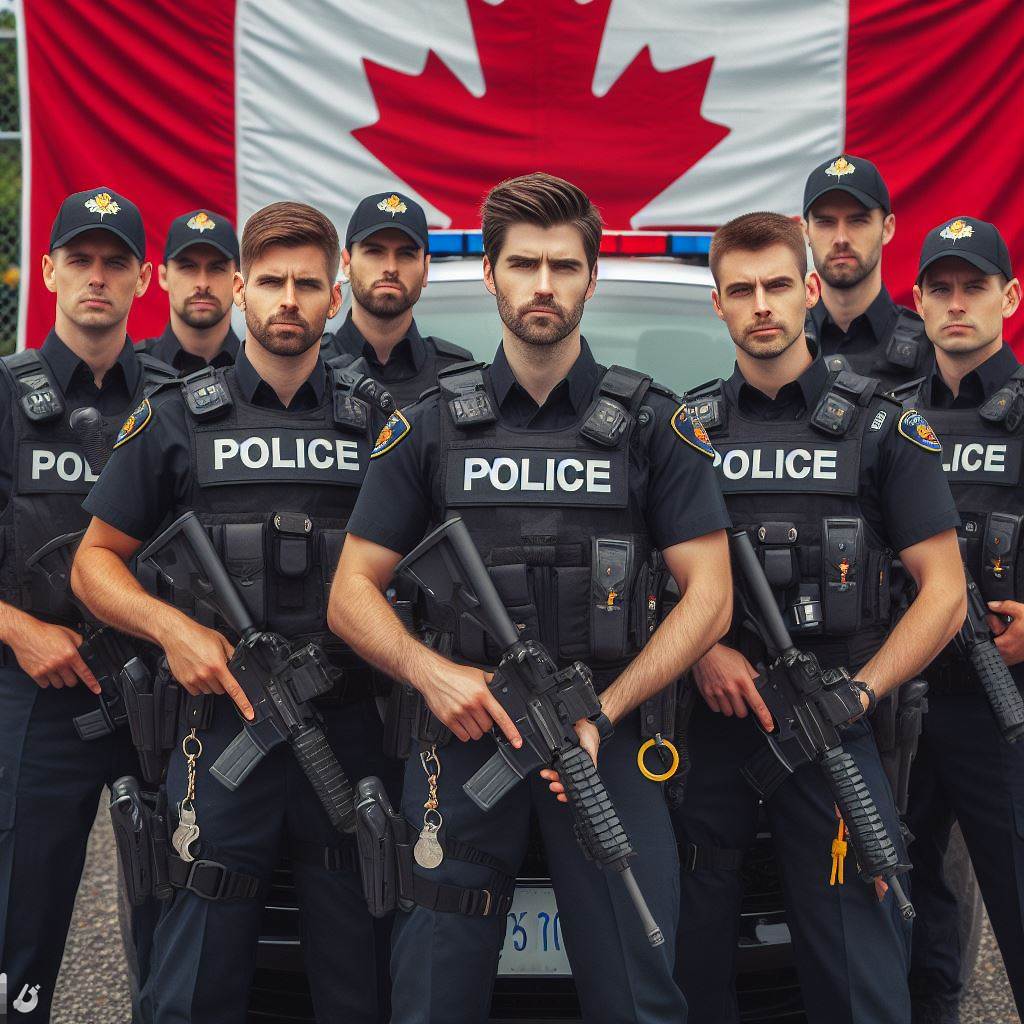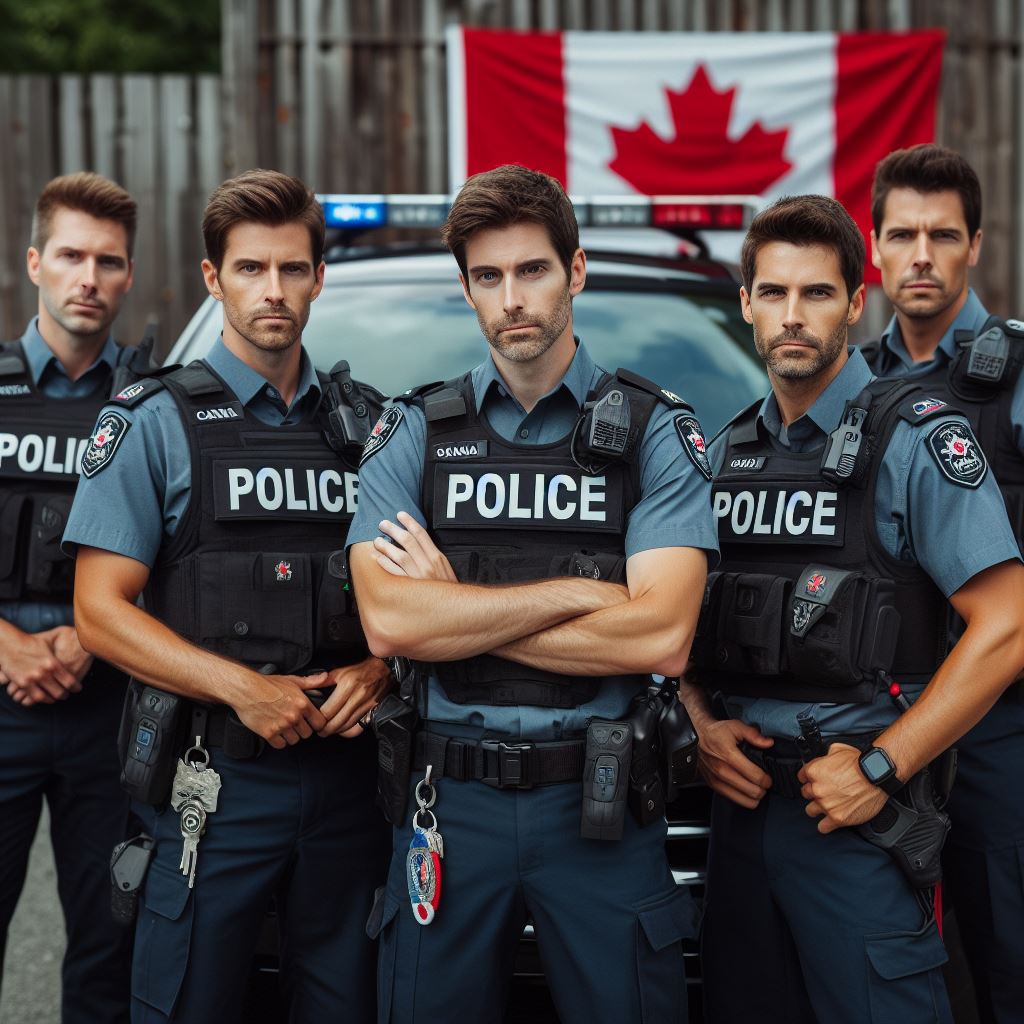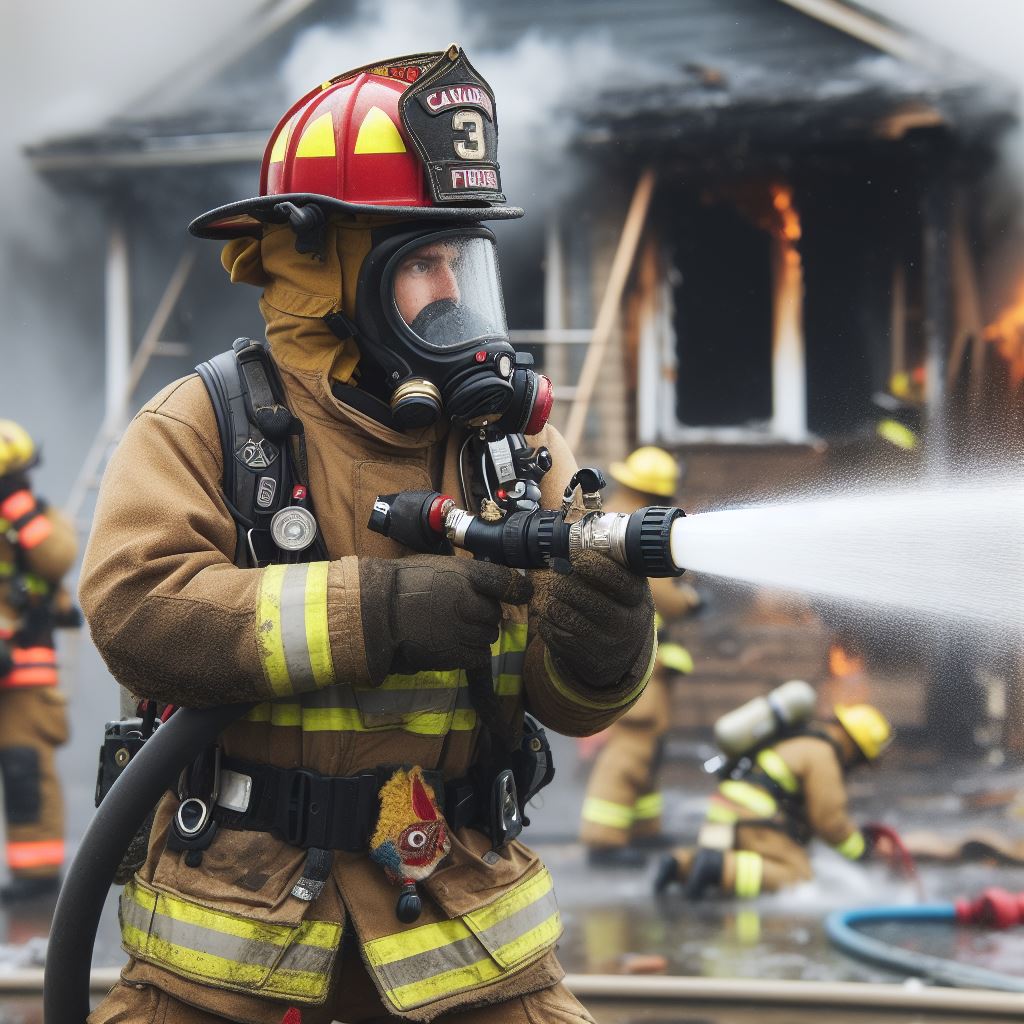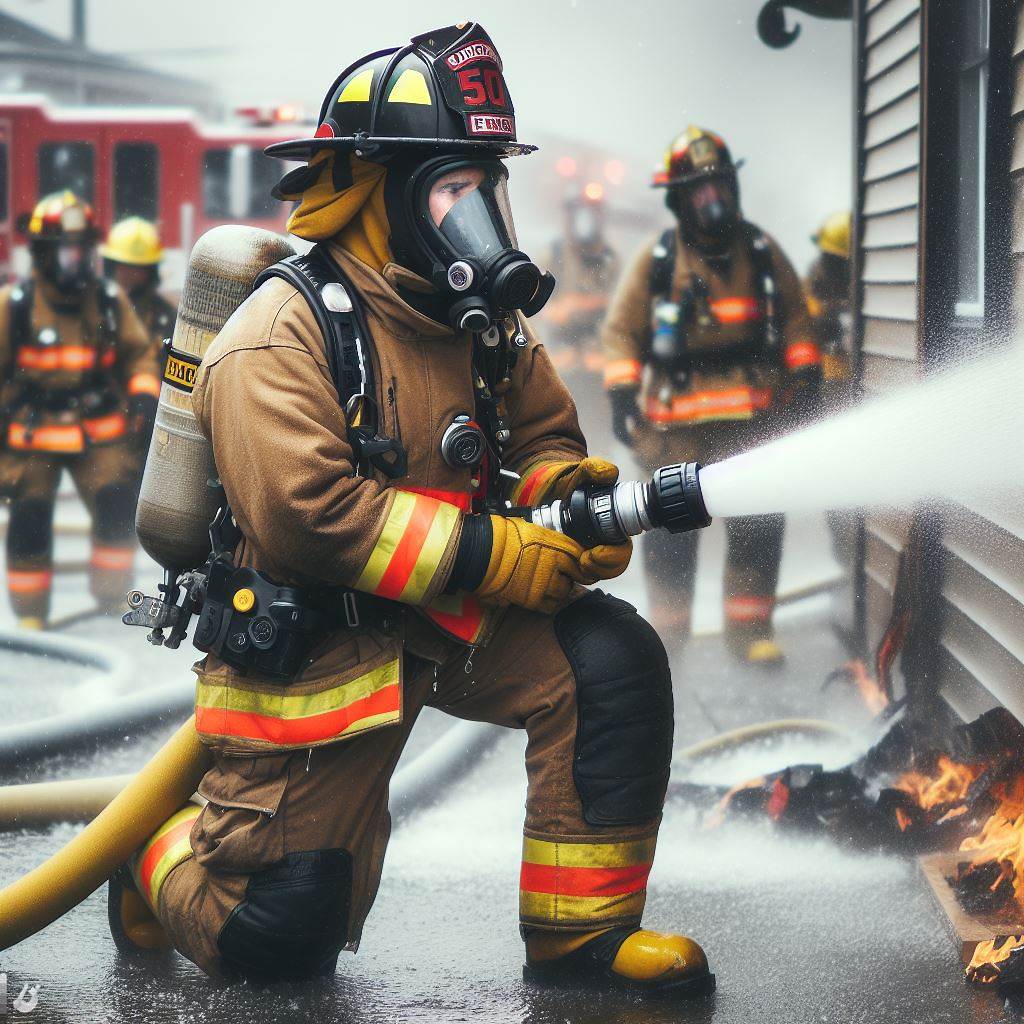Introduction
In the diverse mosaic of Canada, police forces actively cultivate inclusion. Recruiting officers from varied backgrounds enhances community trust.
Diverse perspectives enrich decision-making processes, fostering innovation within law enforcement. The
Royal Canadian Mounted Police (RCMP), for instance, embraces diversity through recruitment initiatives.
These initiatives prioritize representation, acknowledging the importance of reflecting the communities they serve.
Community-oriented policing thrives when officers understand the cultural nuances of the areas they patrol.
Ongoing training programs educate officers on cultural sensitivity, mitigating biases.
Moreover, diverse police forces strengthen connections, bridging gaps between law enforcement and citizens.
Canadian Police Forces and Diversity
Canadian Police Forces are comprised of diverse individuals from various backgrounds, cultures, and ethnicities.
This diversity is essential for effective and unbiased policing.
Importance of diversity in police forces
Diversity in police forces allows for a better understanding of different communities and their specific needs.
It helps build trust and fosters positive relationships between the police and the public they serve.
When police forces reflect the diverse makeup of the communities they serve, it enhances communication and reduces bias and discrimination.
Officers with different perspectives and experiences can provide unique insights and approaches to law enforcement.
Moreover, diversity promotes cultural competency among police officers, enabling them to effectively navigate cross-cultural interactions.
It creates a sense of inclusion and representation for underrepresented communities, fostering a more equitable and just society.
By embracing diversity, Canadian Police Forces can break down barriers and reduce stereotypes, ultimately strengthening community policing efforts.
It also addresses the systemic issues of racism and discrimination that have plagued law enforcement agencies in the past.
In general, the inclusion of diversity in Canadian Police Forces is not only necessary but also crucial for effective policing.
By recognizing the importance of diversity, police agencies can better serve the diverse needs of Canadian communities and improve trust between law enforcement and the public.
Background on Canadian Police Forces
Canada has a rich history of police forces that dates back to the early 19th century. These forces have evolved over time to meet the changing needs of the country.
Brief history of police forces in Canada
The first police forces in Canada were established in the early 1800s. The Royal Newfoundland Constabulary, formed in 1729, is considered to be the oldest police force in the country.
During the early years, policing was primarily focused on maintaining law and order in the rapidly growing urban areas.
The Northwest Mounted Police, later known as the Royal Northwest Mounted Police (RNWMP) and now the Royal Canadian Mounted Police (RCMP), was created in 1873 to bring law enforcement to the western territories.
Over the years, various municipal police forces were established to serve cities and towns across the country.
These forces operated independently from the RCMP and had jurisdiction within their respective municipalities.
Unlock Your Career Potential
Visualize a clear path to success with our tailored Career Consulting service. Personalized insights in just 1-3 days.
Get StartedOverview of different police departments
The Royal Canadian Mounted Police (RCMP) is a federal law enforcement agency responsible for enforcing federal laws and statutes.
They provide policing services to all provinces and territories except Ontario and Quebec, as those provinces have their own provincial police forces.
The RCMP also provides contract policing services to many municipalities across the country.
These agreements allow municipalities to have RCMP officers as their local police force.
In addition to the RCMP, there are numerous municipal police forces in Canada.
These local forces are responsible for enforcing provincial and municipal laws within their jurisdictions.
Examples include the Toronto Police Service, Vancouver Police Department, and Montreal Police Service.
Current challenges and issues faced by Canadian police forces
Canadian police forces face a range of challenges and issues in their day-to-day operations. One of the significant challenges is ensuring diversity and inclusion within their ranks.
Efforts are being made to increase representation of minority groups, such as Indigenous peoples and visible minorities, in Canadian police forces.
This is important for building trust and understanding with diverse communities.
Another challenge is the ongoing need for police forces to adapt to changing technology and societal shifts.
Technology advancements have enabled new forms of crime, such as cybercrime, which police must develop strategies to combat.
Additionally, police departments must address issues of community trust and accountability.
Instances of police misconduct or excessive use of force can erode public trust, and police forces must work to ensure transparency and accountability in their actions.
Generally, Canadian police forces have a rich history and continue to play a crucial role in maintaining law and order.
While they face challenges and issues, efforts are being made to foster diversity, adapt to changing societal needs, and build trust within communities.
The need for diversity in Canadian police forces
Canadian police forces play a crucial role in maintaining law and order, ensuring the safety and security of the communities they serve.
As our society becomes increasingly diverse, it is essential for these police forces to reflect the communities they protect.
In this blog section, we will explore the need for diversity in Canadian police forces, the importance of representing the communities they serve, enhancing trust and confidence in law enforcement, and reducing bias and discrimination in policing.
- Diverse police forces can better understand and respond to the various needs and concerns of different communities.
- Different perspectives and experiences brought by diverse officers can lead to more effective problem-solving and decision-making.
- Increasing diversity can help reduce the cultural and language barriers between the police and minority communities.
- It is essential to ensure fair and equitable treatment of all individuals regardless of their race, ethnicity, or background.
Importance of Representing the Communities They Serve
- Having police officers who reflect the community’s racial, ethnic, and cultural makeup can build trust and improve relationships.
- Minority communities may feel more comfortable approaching and cooperating with police officers who share similar backgrounds.
- Representative police forces can serve as role models, inspiring individuals from diverse backgrounds to consider a career in law enforcement.
- By reflecting the communities they serve, police forces can incorporate different perspectives and cultural sensitivity in their approaches.
Enhancing Trust and Confidence in Law Enforcement
- When the police force represents the diversity of the community, it can enhance trust and credibility.
- Minority communities may have historically experienced wrongful profiling and discrimination, but diversity can help bridge this gap.
- Building trust is crucial for effective crime prevention, investigation, and community cooperation.
- Officers who understand the cultural nuances and specific challenges faced by minority communities can effectively address their concerns.
Reducing Bias and Discrimination in Policing
- Diverse police forces can challenge and minimize biases and prejudices that may exist within law enforcement institutions.
- By promoting diversity, police forces can increase officers’ cultural competence and reduce biased attitudes and behaviors.
- Representation and diversity can create a more inclusive work environment, fostering respect and understanding among officers.
- Training programs on cultural awareness and sensitivity can help address systemic biases and promote fair and unbiased policing.
In review, diversity in Canadian police forces is essential for various reasons.
It allows for better understanding and response to community needs, improves trust and confidence in law enforcement, and helps reduce bias and discrimination within policing.
By embracing diversity, Canadian police forces can strive towards more effective and fair law enforcement practices that serve and protect all individuals in our diverse society.
Current state of diversity in Canadian police forces
The current state of diversity in Canadian police forces is a topic of significant importance.
It is essential to closely examine the diversity statistics within various police departments across the country.
Identifying gaps or underrepresentation of certain communities will shed light on the existing challenges and opportunities for improvement.
Overview of Diversity Statistics within Canadian Police Departments
Diversity within Canadian police forces has been a subject of increasing importance in recent years.
A comprehensive analysis of diversity statistics reveals both progress and areas for improvement.
The Royal Canadian Mounted Police (RCMP), for instance, has made significant strides in enhancing diversity.
According to recent data, visible minority groups account for 20% of RCMP members, reflecting an improvement.
However, indigenous representation within the RCMP is still below desired levels.
Indigenous people, who constitute a substantial portion of Canada’s population, remain underrepresented in the force.
The Toronto Police Service is another crucial example to consider.
With a city as diverse as Toronto, the police force aims to reflect the community it serves.
The statistics indicate that around 35% of Toronto Police officers come from visible minority groups.
However, black, Indigenous, and other racialized communities remain underrepresented in comparison to their population percentage.
This gap highlights the importance of actively addressing diversity concerns within law enforcement agencies.
The Vancouver Police Department (VPD) is also a notable case in terms of diversity representation.
The VPD has made significant efforts to enhance the representation of visible minorities.
The data shows that nearly 30% of VPD officers are from visible minority backgrounds, which is commendable.
However, women representation within the VPD remains lower than desired, particularly in leadership roles.
Recognizing and addressing these gaps is crucial for policing organizations to enhance public trust and effectiveness.
Identification of Gaps or Underrepresentation of Certain Communities
Although progress has been made, it is essential to recognize the underrepresentation of certain communities within Canadian police forces.
Indigenous people, for instance, are significantly underrepresented in most police departments across the country.
Addressing this gap not only ensures better representation but also fosters a more inclusive and effective criminal justice system.
Similarly, black, racialized, and other minority communities continue to face underrepresentation challenges.
Efforts need to be directed towards recruiting and retaining police officers from these communities.
Moreover, a gender gap persists within the police forces, with women being underrepresented, especially in leadership positions.
Encouraging more women to join the police forces and providing equal opportunities for their advancement is crucial for diversity.
Police departments must actively work towards bridging these gaps by implementing targeted recruitment strategies.
Outreach programs, partnerships with community organizations, and mentorship initiatives can be effective in attracting diverse talent.
Improving diversity within Canadian police forces not only ensures representation but also leads to better community policing.
When police officers reflect the communities they serve, it fosters trust, understanding, and effective communication.
Furthermore, diverse perspectives and experiences bring valuable insights that can help address systemic issues in the justice system.
In fact, diversity is an essential aspect of Canadian police forces that requires continuous evaluation and improvement.
By identifying gaps and underrepresentation of certain communities, police departments can take proactive steps towards a more diverse and inclusive workforce.
Ultimately, enhancing diversity within law enforcement agencies will contribute to building safer and more harmonious communities in Canada.

Initiatives and efforts to improve diversity in Canadian police forces
- Recruitment strategies targeting underrepresented groups
- Outreach programs aimed at building relationships with diverse communities
- Training programs to promote cultural competency and inclusivity
Improving diversity in Canadian police forces is a vital step towards building stronger and more effective law enforcement agencies.
By actively addressing the underrepresentation of certain groups, Canadian police forces can strive towards a more inclusive and representative police service.
Recruitment strategies play a crucial role in diversifying police forces.
Police departments actively seek out individuals from underrepresented groups through targeted advertising, recruitment fairs, and partnerships with community organizations.
By actively reaching out to these groups, police forces can tap into a wider pool of candidates and ensure a more inclusive representation.
Efforts to improve diversity in Canadian police forces also extend to outreach programs.
These programs are designed to establish trust, develop positive relationships, and enhance communication between the police and diverse communities.
Through events like cultural celebrations, workshops on police practices, and collaboration on community projects, the police can work towards breaking down barriers and addressing community concerns effectively.
In addition to recruitment and outreach efforts, training programs are a crucial aspect of promoting diversity and inclusivity within Canadian police forces.
These programs educate officers on the importance of cultural competency and equip them with tools to navigate diverse situations sensitively.
By fostering better understanding and respect for different cultures, officers can effectively serve their communities and promote positive police-community relations.
Overall, implementing initiatives and efforts to improve diversity in Canadian police forces is a continuous process.
It requires active participation from both police departments and the communities they serve.
By taking steps to recruit from underrepresented groups, fostering positive relationships through outreach programs, and promoting cultural competency through training programs, the Canadian police forces can strive towards a more diverse, inclusive, and effective law enforcement system.
Read: Balancing Work-Life in Police Careers
Success stories and best practices
Canadian police forces have made significant strides in promoting diversity within their ranks, resulting in positive impacts on community trust.
By implementing successful diversity initiatives, they have set an example for other organizations to follow.
Successful diversity initiatives within Canadian police forces
- Recruitment efforts: Police forces across Canada have actively focused on diversifying their recruitment strategies.
- Targeted outreach: They have reached out to underrepresented communities to encourage individuals from diverse backgrounds to consider a career in law enforcement.
- Partnerships with community organizations: Police forces have formed partnerships with community organizations that work closely with marginalized groups.
- Mentorship and support programs: They offer mentorship and support programs to help individuals from diverse backgrounds navigate their careers in law enforcement.
- Training and education: Police forces prioritize cultural competency training and education for their officers, improving their understanding of different cultures and communities.
- Leadership development: They have implemented programs to develop and promote diverse leaders within their ranks, ensuring representation at all levels of command.
- Employee resource groups: Canadian police forces have established employee resource groups to provide a supportive network and promote inclusivity within the organization.
Examples of positive impacts on community trust
- Improved police-community relationships: The initiatives have contributed to stronger relationships between the police and the communities they serve.
- Increased reporting and cooperation: Communities feel more comfortable reporting crimes and cooperating with police investigations.
- Enhanced cultural understanding: Police officers with diverse backgrounds bring unique perspectives and cultural understanding to their interactions with community members.
- Reduced biases and stereotypes: Diversity initiatives help challenge and reduce biases and stereotypes within police forces, leading to fair and unbiased treatment of individuals.
- Empowered marginalized communities: The presence of officers from diverse backgrounds empowers marginalized communities, fostering a sense of inclusion and trust.
- Enhanced problem-solving abilities: The inclusion of diverse perspectives and experiences strengthens the police forces’ problem-solving abilities.
- Increased community engagement: Successful diversity initiatives have sparked community engagement, resulting in collaborative efforts to address local issues.
Canadian police forces continue to build upon their success stories and best practices to create inclusive and diverse law enforcement organizations.
By valuing and respecting differences, they are improving community trust, fostering positive relationships, and promoting fairness and equity in their interactions with the public.
Read: Firefighters’ Role in Canadian Communities
Challenges and Barriers to Achieving Diversity in Canadian Police Forces
- Lack of representation: A major challenge in achieving diversity in Canadian police forces is the lack of representation from various ethnic, cultural, and minority groups.
- Recruitment barriers: Existing recruitment practices often do not effectively attract individuals from diverse backgrounds, resulting in a limited pool of candidates.
- Stereotypes and biases: Deep-rooted stereotypes about who can be a police officer can discourage diverse individuals from pursuing a career in law enforcement.
- Limited cultural awareness: Police forces may lack resources or training to understand and respect the cultural nuances and practices of diverse communities.
- Language barriers: In communities with a significant number of non-English speakers, language barriers can hinder effective communication and engagement between the police and the community.
Identifying Obstacles that Hinder Diversity Efforts
- Organizational resistance: Some police organizations may resist efforts to diversify their workforce due to a fear of change or a perceived threat to existing power structures.
- Unconscious biases: Implicit biases held by hiring managers and selection committees can subconsciously affect the selection process, favoring candidates who align with the existing workforce demographic.
- Lack of accountability: Without clear goals and metrics to measure diversity progress, police forces may not prioritize or actively work towards achieving diversity.
- Inadequate diversity training: Police officers may not receive sufficient training on cultural competency, inclusivity, and anti-racism, making it difficult to appropriately engage with diverse communities.
- Retention challenges: The lack of support systems, mentorship, and inclusive environments within police forces can contribute to lower rates of retention for diverse individuals.
Systemic Issues and Biases that Need to be Addressed
- Systemic racism: Addressing systemic racism within police forces is crucial to building trust and increasing representation of diverse communities.
- Biased policing practices: Law enforcement agencies need to confront and eliminate biases in their practices, ensuring fair treatment for all individuals regardless of their background.
- Miscommunication and mistrust: Historical instances of police misconduct have led to a breakdown in trust between marginalized communities and the police, hindering diversity efforts.
- Lack of community engagement: Building trust requires proactive efforts from police forces to establish meaningful relationships and engage with diverse communities on a regular basis.
- Inclusive policies and practices: Implementing policies and practices that promote equity, diversity, and inclusion at all levels of the organization is essential in achieving lasting change.
In short, achieving diversity in Canadian police forces faces various challenges and barriers, including lack of representation, recruitment barriers, stereotypes, and biases.
Overcoming these obstacles requires acknowledging and addressing systemic issues, biases, and implementing policies and practices that prioritize diversity and inclusivity.
By actively working towards diversity, Canadian police forces can better serve and connect with the diverse communities they protect.
Read: Canadian Police and International Cooperation
Learn More: Mental Health Support for Firefighters
The Future of Diversity in Canadian Police Forces
Canadian police forces have recognized the need for diversity and inclusion within their ranks.
To foster diversity and inclusion, police forces should consider implementing the following strategies:
- Enhance recruitment efforts in diverse communities to attract a wider range of candidates.
- Offer cultural sensitivity training to ensure officers understand and respect different cultures and backgrounds.
- Implement mentorship programs to support the career development of underrepresented groups within the police force.
- Establish diversity and inclusion committees to create policies and initiatives that promote diversity.
- Collaborate with community organizations that specialize in supporting marginalized groups.
- Provide ongoing education and training on diversity and inclusion to officers and leaders.
- Develop partnerships with academic institutions to conduct research on diversity in policing and identify best practices.
- Ensure that promotional opportunities are accessible to all officers, regardless of their background.
The role of legislation and policies in promoting diversity
Legislation and policies play a significant role in promoting diversity within Canadian police forces.
The introduction and enforcement of specific legislation and policies can:
- Create quotas or targets for the recruitment and advancement of underrepresented groups.
- Require police forces to collect and analyze demographic data to assess diversity efforts.
- Establish accountability measures for police forces to regularly report on their diversity and inclusion initiatives.
- Provide funding for diversity training programs and initiatives.
- Support the implementation of cultural competence standards for all police officers.
- Implement policies that address and prohibit discrimination within the police force.
- Encourage partnerships and collaborations between police forces and community organizations.
Continuous evaluation and improvement are essential to achieving lasting diversity and inclusion in Canadian police forces.
Regular assessment and adjustment of strategies can:
- Identify areas where diversity efforts are successful and should be expanded.
- Recognize potential challenges or barriers that hinder diversity and address them promptly.
- Ensure that diversity and inclusion goals are consistently integrated into all aspects of policing.
- Monitor the representation and experiences of underrepresented groups within the police force.
- Engage in regular consultations with community members to gather feedback and evaluate progress.
- Encourage transparency and accountability in reporting diversity data and outcomes.
With a commitment to diversity, Canadian police forces can strengthen their relationships with the communities they serve.
Through fostering inclusivity, police forces become more representative of the diverse population they protect.
By continuously evaluating and improving their strategies, Canadian police forces can maintain a positive trajectory towards achieving increased diversity and inclusion in the future.
Read: Youth Outreach Programs by Canadian Police
Conclusion
Diversity plays a crucial role in Canadian police forces, promoting inclusivity, understanding, and effective policing.
Recap of the importance of diversity in Canadian police forces
Firstly, diversity in the police forces reflects the multicultural nature of Canadian society, fostering trust and confidence among different communities.
Secondly, diverse perspectives contribute to better decision-making processes, reducing the potential for bias and discrimination.
Thirdly, a diverse police force can communicate and engage more effectively with a wide range of individuals, helping to resolve conflicts and prevent escalation.
Moreover, diversity enhances the ability to address and understand the unique needs and concerns of different communities, ensuring fairness and justice.
Lastly, diverse representation within the police forces can attract more individuals from underrepresented backgrounds to join law enforcement careers.
Final thoughts on the topic
While progress has been made, ongoing efforts are essential to expand diversity within Canadian police forces.
Introducing more inclusive recruitment practices, providing cultural sensitivity training, and fostering a supportive environment for diverse officers are crucial steps forward.
Moreover, it is necessary to continuously evaluate policies and procedures to ensure that they are equitable and unbiased.
By actively embracing diversity, Canadian police forces can continue to evolve and become more representative of the communities they serve.
Ultimately, diversity is not only a moral imperative but also a strategic advantage for a modern and inclusive police force in Canada.




